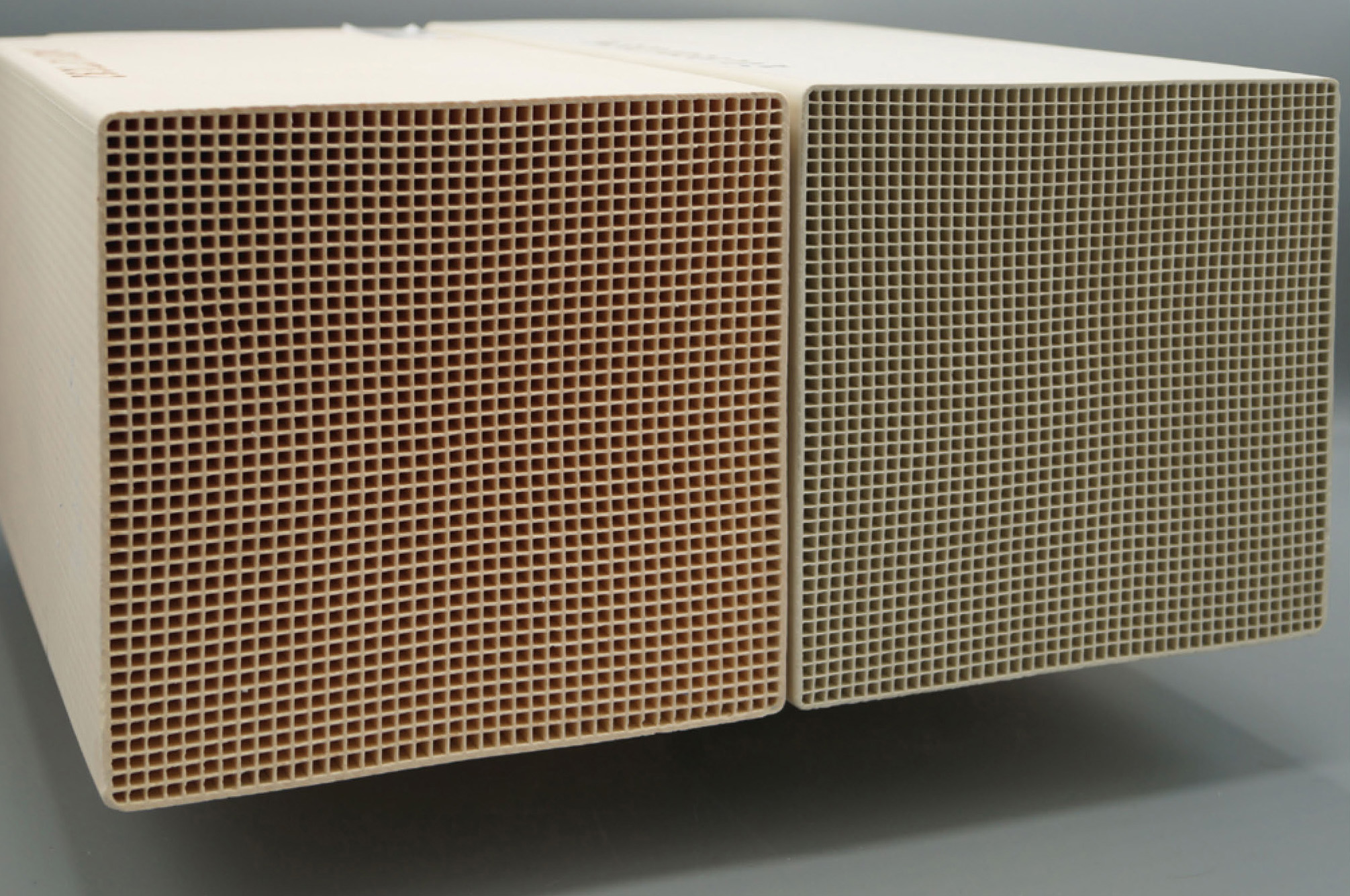
Durable ceramic heat exchanger honeycombs for exhaust air purification
Current research


Regenerative thermal oxidation (RTO) is an exhaust gas purification process used in industrial plants to reduce hydrocarbon emissions. In this process, the exhaust gases are heated to high temperatures in oxidation reactors to convert volatile organic compounds (VOCs) with oxygen. Ceramic honeycombs are commonly used as heat exchangers (regenerators) for regenerative heat recovery. The honeycombs are arranged in regenerator beds, which are preheated in a first step by the purified hot gas flow from the oxidation reactor. After reversing the flow direction, the absorbed heat energy is transferred to the cold, unpurified exhaust gas. At flue gas temperatures of 800 to 900 °C and sufficient VOC concentrations, the RTO system can operate in autothermal mode with self-sustaining combustion of the organic compounds in the flue gas.
Because of its high thermal and chemical resistance, alumina porcelain is often used as a material for ceramic heat exchangers. Even though the honeycombs have a good mechanical strength, high temperature differences and frequent temperature changes in the heat exchanger bed can lead to degradation. Analyses at Fraunhofer IKTS of aged honeycombs have shown that cracks on the inner surface increase the porosity of the honeycomb material.
As a result, an increased amount of decomposition products can be deposited on the surface. Subsequently, the heat transfer efficiency decreases significantly and hydrocarbon emission thresholds cannot be met. As part of project “LangRTO”, funded by the German Federal Ministry for Economic Affairs and Climate Action (BMWK), which focused on the development of more durable exhaust air purification systems, research was performed at IKTS on materials and processes to stabilize the surfaces of ceramic honeycombs. The aim was to reduce the degeneration and subsequent loss of performance in the RTO process. To achieve this, Fraunhofer IKTS, together with project partner Relox Anlagen GmbH, worked on improving the RTO process to be able to permanently comply with future emission thresholds determined through continuous measurement.
To seal and stabilize the surface of the ceramic material, protective layers of glazing materials and coating processes for the post-treatment of commercially available ceramic honeycombs were developed in the project. The most homogeneous coatings with good adhesion to the substrate and layer thicknesses in the range of 35 to 70 μm were achieved with glazes whose firing temperature is below the softening point of the ceramic substrates. The resulting protective layers reduced the surface porosity of the material and minimized the formation of cracks at the honeycomb surface. Additionally, thanks to their softening behavior, the glazes also have the potential to heal cracks in the coated surfaces at higher temperatures. In real tests of coated honeycombs in the RTO process, no adsorption of hydrocarbons and decomposition products from the exhaust gas was detected that would significantly impair heat exchanger performance.
Services and cooperation offered
- Development of ceramic heat storage materials with application- oriented properties
- Development of processes for material modification and surface coating
- Characterization of honeycomb substrates and heat storage materials regarding chemical, mechanical and thermal properties
Supported by
